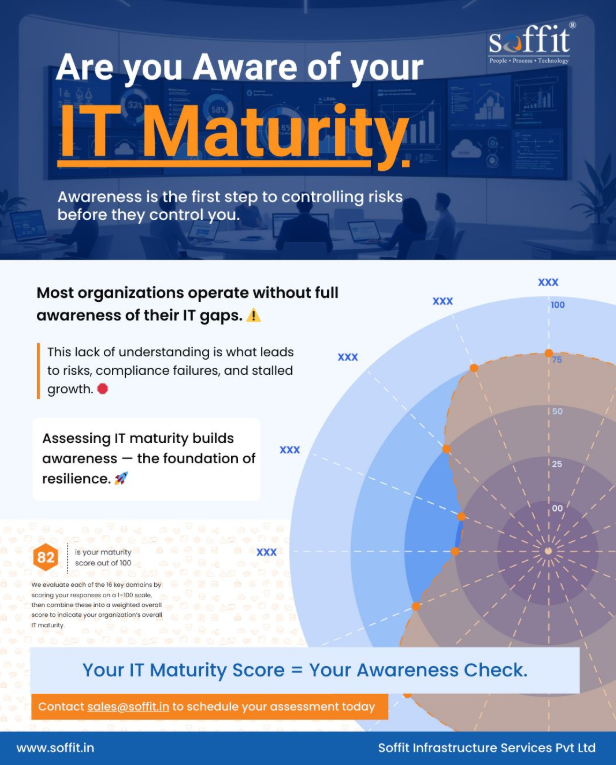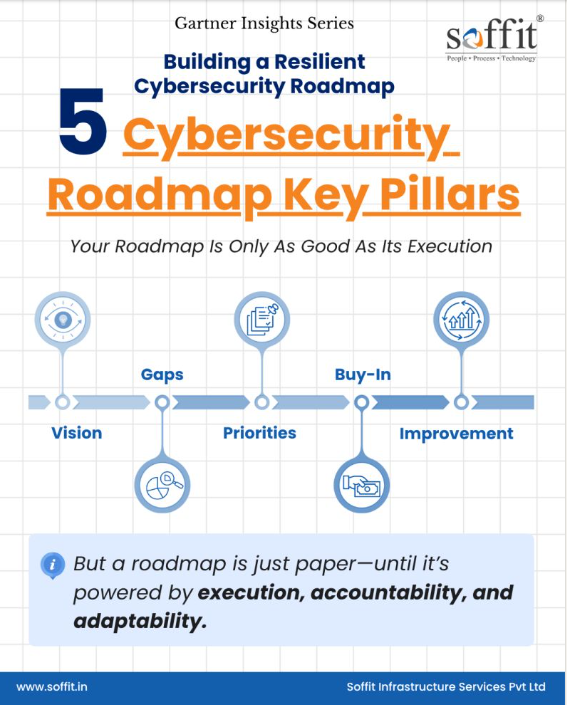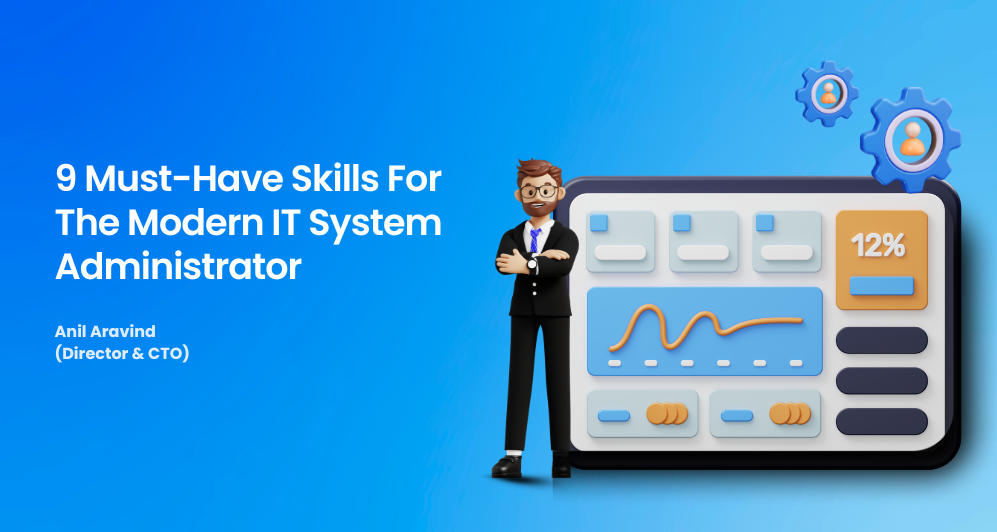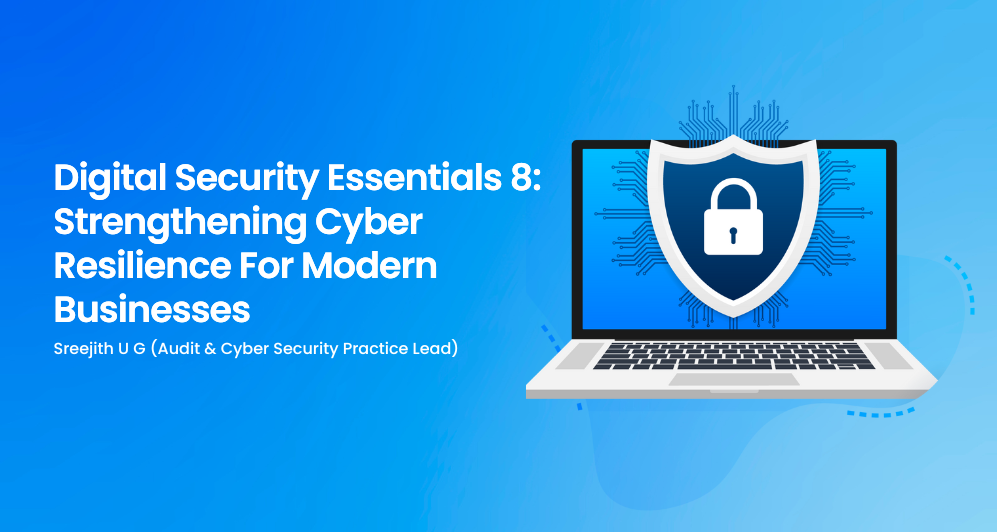
Heading
Lorem ipsum dolor sit amet, consectetur adipiscing elit. Suspendisse varius enim in eros elementum tristique. Duis cursus, mi quis viverra ornare, eros dolor interdum nulla, ut commodo diam libero vitae erat. Aenean faucibus nibh et justo cursus id rutrum lorem imperdiet. Nunc ut sem vitae risus tristique posuere.
Last updated on
July 15, 2025
min read
The world today is moving at lightning speed, and businesses are becoming increasingly reliant on technology to drive their success. However, with the benefits of technology come the risks of security breaches, data loss, and other security threats. This is why managing IT infrastructure has become a crucial component of any business operation.
Effective IT infrastructure management can not only protect your business against cyber threats but also streamline your operations, increase productivity, and drive profitability. At the same time, managing IT infrastructure can be a challenging task. Businesses have to keep up with constantly evolving technology landscapes, the latest trends and best practices.
In this blog post, we will discuss the significance of managing IT infrastructure and provide some valuable tips to help businesses efficiently manage their IT systems. By implementing these practices, businesses can safeguard their digital assets, streamline their operations, and achieve their goals with confidence.
What is IT Infrastructure and why Modernization of IT Infrastructure Important?
IT infrastructure is the backbone of any modern business, encompassing hardware, software, and networking components of your business. It is broadly categorized into two types: critical and non-critical components. Critical components are the core components of IT infrastructure and include servers, network switches, routers, firewalls, and storage devices. They are responsible for ensuring data security, maintaining uptime, and ensuring the availability of applications and services.
Non-critical components, on the other hand, include end-user devices such as desktops, laptops, tablets, and smartphones. The performance of these devices is essential for employees’ day-to-day work, such as communication, collaboration, and productivity. Any slowdown in the work process can result in unproductivity and potentially lead to security breaches. Hence, these components should be properly maintained and managed to ensure effective operations.
There are several types of IT infrastructure that play a vital role in supporting and delivering various IT services. These include:
- Security Infrastructure - It encompasses all the hardware and software systems required to protect an organization's digital assets from external and internal threats.
- Network Infrastructure- It includes all the hardware and software components required to establish and maintain an organization's internal and external connectivity.
- End-user infrastructure- It refers to the hardware and software components required to provide users with the tools and systems needed to perform their daily tasks.
- Computing Infrastructure- It includes all the hardware and software components needed to run an organization's computing systems.
- Application Infrastructure- It refers to the hardware and software components that support an organization's software applications.
The following table illustrates various types of IT infrastructures along with the list of components included in each of them.

Each of these components requires proper management and maintenance to ensure effective operations. However, ignoring the modernization of IT infrastructure management can lead to several risks.

A recent cyberattack reported by cloud security firm Sysdig highlights the need for comprehensive security strategies for IT infrastructure. Attackers were able to obtain initial access by targeting a public-facing service in a self-managed Kubernetes cluster located inside an AWS cloud account. Infrastructure owners failed to configure Terraform with appropriate permissions, making shared storage such as Amazon S3 buckets an ideal alternative for storing the configuration file. The incident is a reminder that cloud and container security still require major attention to avoid data leaks.
The IC3's 2022 Internet Crime Report underscores the increasing number of complaints and losses due to cybercrime, emphasizing the need for a comprehensive security strategy.
Therefore, modernizing IT infrastructure management is critical for organizations to ensure security, reduce costs, increase efficiency, meet changing business needs, and stay competitive in the market.
6 Key Benefits of Effective IT Infrastructure Management
Effective management of IT infrastructure can provide numerous benefits for businesses. A well-managed IT infrastructure can:
1. Enhance Efficiency
Effective IT infrastructure management helps optimize business processes, streamline workflows, and increase productivity, resulting in improved efficiency and profitability.
2. Improve Security
Proper management of IT infrastructure helps to mitigate security risks and protect against cyber threats, such as malware, phishing, and hacking.
3. Better Resource Allocation
IT infrastructure management allows organizations to allocate their resources more effectively by identifying and prioritizing critical applications and services.
4. Regulatory Compliance
Managing IT infrastructure helps organizations comply with industry regulations, data protection laws, and other legal requirements.
5. Improve Decision Making
IT infrastructure management provides valuable insights into the performance of IT systems, enabling informed decision-making and strategic planning.
6. Ensure Business Continuity
Effective management of IT infrastructure ensures business continuity in the event of a system failure, disaster, or other unforeseen events.
Hence, the effective management of IT infrastructure is crucial for ensuring the smooth functioning of an organization's IT systems, protecting against cyber threats, and complying with legal requirements.
What are the Best Practices for Managing IT Infrastructure?
Achieving the benefits requires implementing best practices for managing IT infrastructure. These best practices can improve the value of IT infrastructure and ensure that it is aligned with the organization’s goals. Here are some of the most important ones:

By following these best practices, businesses can manage their IT infrastructure efficiently, reduce security risks, and improve operational efficiency, ultimately driving business success.
Building a Strong Foundation: The Strategy for Effective IT Infrastructure Management
Managing IT infrastructure can be a complex and challenging task, especially for businesses with limited resources and expertise. However, here are some steps to consider when developing a strategy for building a strong IT infrastructure foundation:
Develop a comprehensive IT strategy
Define your organization's IT goals and align them with your business objectives. Develop a plan that outlines the resources, budget, and timeline needed to achieve your goals. This strategy will serve as the backbone of your IT infrastructure management, providing a clear direction and purpose for all technology-related decisions.
Build a security strategy
Implement a robust cybersecurity strategy that includes IT policies, employee training, and regular vulnerability assessments. By prioritizing security, you can protect your business from costly data breaches, loss of reputation, and legal ramifications.
Implement an ITSM process
IT service management (ITSM) involves the use of best practices, standards, and frameworks to ensure that IT services are aligned with the needs of the business, and that they are delivered in a consistent, efficient, and effective manner. This process helps improve communication, collaboration, and accountability between IT and business units, ensuring that technology is used to its full potential to achieve business objectives.
Consider managed IT services
By working with a managed services provider, businesses can access advanced technologies and expertise, improve security and compliance, and optimize costs. Managed IT services providers can offer a range of services, including network and server management, cybersecurity, backup and recovery, cloud computing solutions, and help desk support. This outsourcing allows you to free up internal resources and focus on core business activities.
Hence, by following these strategies, businesses can better manage and build their IT infrastructure, ensuring that it is aligned with your business goals and maximizing the value you get from your technology investments.
Final Thoughts
Effective IT infrastructure management is crucial for any business that wants to stay ahead in the ever-changing digital landscape. Overlooking the value of IT modernization can lead to missed opportunities, decreased productivity, and a higher risk of cyber threats. The earlier the organizations act, the bigger their edge in the market.
To remain competitive and future-proof your organization, you must act now and invest in IT infrastructure management. By implementing the best practices and building a strong foundation, you can safeguard your IT infrastructure and reap the benefits in the long run.
Don't wait until an IT issue arises to take action; secure your company's future today.
Further learning:
Overcoming IT Infrastructure Management Challenges with Managed IT services
The Benefits of Outsourcing IT Infrastructure Management to a Managed Service Provider
Join our Community
Subscribe for exclusive updates and news.
Read about our privacy policy.



.svg)












.webp)
.webp)
.webp)
.webp)
.webp)
.svg)






.webp)

.webp)







































